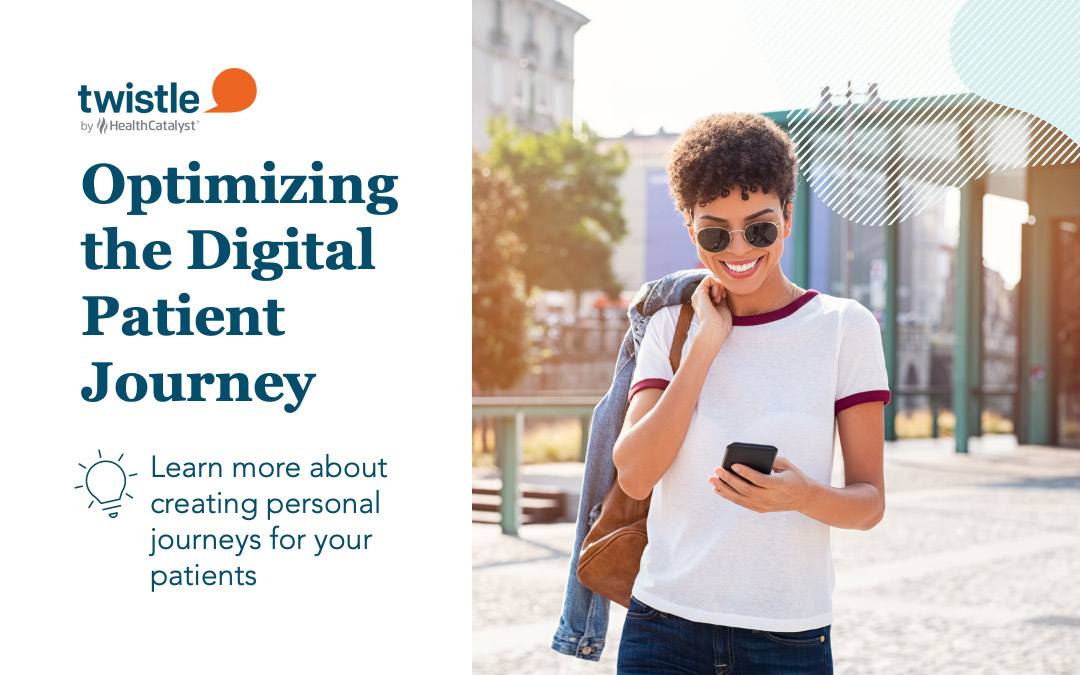Keeping patients on track requires a care platform designed to deliver the right information at the right time.
Learn how Twistle by Health Catalyst helps streamline care and improve outcomes with proven automated clinical communication software.
 Download
Download

The COVID-19 pandemic has accelerated the adoption of digital health tools like telehealth appointments and lowered reimbursement-related barriers to virtual care. Now we are faced with the challenge of activating patients across the digital care journey — ensuring that they have an understanding, competence, and willingness to participate in care decisions and processes.
As more and more healthcare interactions move online, there is a new spotlight on patient experience and seamless digital health journeys. Developing effective strategies and technologies that facilitate patient activation and improve outcomes is dependent on data analysis, iteration and optimization.
Throughout Twistle’s ten-year history, we have generated meaningful activation data from which we can confidently recommend optimal patient engagement pathways. We partner with health systems to achieve the best engagement rates in the industry – over 75% for many of our programs – and significantly improve health outcomes and quality of life for patients.
We have discovered that the optimal patient experience incorporates a wide array of factors that range from the use of empathy to the technical features of the delivery method. When evaluating engagement software and strategies to optimize patient activation, consider the following elements.
Are you communicating at times and intervals when patients are more likely to engage? We have found that messages delivered at certain times of the day have consistently higher engagement rates. Conversely, we’ve found there are definitely times to avoid when designing your communication cadence.
Much like our clinical staff, patients also experience alert fatigue so organizations must take care to deliver an appropriate number of messages throughout each engagement pathway or episode of care.
According to Pew Research, 81% of Americans have a smartphone and 96% own a cell phone of some kind. Many patients, however, do not want to download an app or remember access instructions and passwords for patient portals. Keeping patient communication simple via SMS text messages increases engagement. Make sure patients have options and are able to engage on their own terms so that your outreach is accessible for all patients.
Not every patient understands medical terminology or has the same health literacy level. Keeping patient outreach messages short, using easy to understand wording and descriptive subject lines ensure that patients can follow instructions and respond to inquiries about their health and recovery. We strive to provide guidance in small, digestible messages delivered right when the information is needed and can be acted upon.
We have found that patient activation is optimal when we provide more than clinical information. Sometimes they need a gentle nudge or a friendly reminder that they’re not alone and that someone’s looking out for them. Alleviate patient anxiety by keeping messages encouraging to further nurture the provider – patient relationship and build loyalty and trust.
In order to iterate and improve the digital patient care journey, analysis of outreach and engagement behaviors should also be conducted. What content worked and what fell flat? Which pathways had the perfect number of touch points and which missed the mark? These data-driven decisions will lead to true optimization and improved patient activation.
Clinical pathways should be living care journeys, not static “set it and forget it” templates. If you need a technology partner who can offer guidance, analysis, and flexibility to make real time adjustments in order to create an effective and meaningful patient experience, contact us today.